On Wednesday this week I visited Kew Gardens. I hadn’t been for many years but was drawn by the International Garden Photographer of the Year competition. Whilst there I spent a long time in the Princess of Wales Conservatory, where it was warm at least, to practice some photography of my own. Some of the pictures appear on these pages, including a set of portraits I put together for International Women’s Day on Thursday.
After five years of refurbishment, the Temperate House at Kew is due to reopen in May, a project which has been astoundingly complex. I share here news of my own greenhouse build and a plant I hope to grow in it when finished.
Finally, I share some techniques to tackle the troublesome fungus gnat and report on the progress of my sweet peas.
My own crystal palace under construction
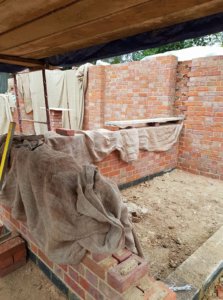
The brickwork base for my new dream greenhouse
I have been experiencing a glasshouse project of my own – as I watch the bricklayers defy the cold and wet to build the base for my new greenhouse. The same logistics are involved as at Kew, just on a smaller scale – coordinating builders, the greenhouse manufacturer and electricians – and moving and storing plants in places they’d rather not be.
I blame the structures seen in my youth for my greenhouse obsession. Long before I visited Kew, I regularly paid school lunch-hour visits to the Paxton glasshouses at the Sheffield Botanic Garden. Paxton also famously built the glasshouse that housed the 1851 Great Exhibition, later moved to Crystal Palace.
Funded through savings and a legacy from my equally greenhouse-obsessed late father, my new greenhouse is a longed for extravagance. It will have a partitioned zone that I can choose to heat year round if I’d like, and spacious benching for the seed growing that obsesses me each year. It will have a central porch entrance with cold frames either side and the whole structure will be built against a brick wall that faces south.
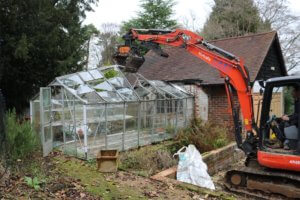
Demolition of old greenhouse
Sadly, this means I have had to say goodbye to my trusty old greenhouse. It was a most happy place; where I planted pumpkin seeds with my little son, where I raised hundreds and hundreds of plants that gave colour to every corner of my garden and food for our plate.
The old greenhouse leaked and the door didn’t shut. The vents wouldn’t open – and some wouldn’t close. Many of the glass panes were broken. The demolition still left me sad but I can’t wait to step inside my new one.
It’s not a Paxton but it will be my crystal palace.
Greenhouse must have – Mimosa
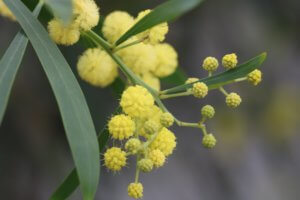
Mimosa – flowering beautifully in the Princess of Wales Conservatory at Kew
Anyone that’s planning a new greenhouse will have to consider a long set of questions to decide what to build. Cost is the most obvious factor but important too is where to plug the kettle and will there be room for a deckchair?
My main starting point was what do I want to grow? The one thing I did know about myself is that I am attracted to growing things that are on the edge of hardiness in the UK. One of the first gardening books I bought was on tender perennials and I have many plants which I worry about every year – will they survive the winter and how best do I help them to?
In London I loved to grow Datura but struggled with the overwintering, relying of fleece and bubble wrap and praying for a mild winter. I have two Oleanders in pots which clung on in my old potentially-not-frost-free greenhouse. They never quite delivered the abundance of flowers in summer that I would have liked.
My new greenhouse gives me the opportunity to overwinter with more confidence and if I choose to heat the partitioned area it could deliver some magnificent dream plants year round.
This week I visited Kew Gardens and saw a beautiful Mimosa tree inside the Princess of Wales greenhouse. It took me an age to photograph as it was just inside the door and the branches were constantly wafting about as school parties came and went, and visitors sheltered from the drizzle. It’s a definite for my new greenhouse and a neighbour has a plant that may have some suitable cutting material.
Portraits for International Women’s Day
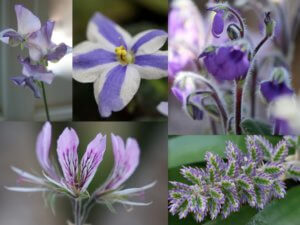
Flower portraits in colours of the Women’s suffrage movement
Please forgive me for sharing these photos again. They’re already on my website but I love the combination so much that I wanted to share them again for the Six on Saturday.
Two of these photos were taken this week at Kew, again in the Princess of Wales greenhouse. I do not know what the strange multi-coloured flower is in the bottom right hand corner. It grew above leaves that looked a bit like a bromeliad but in the hubbub of the busy greenhouse I didn’t find the name plaque.
I do know that the pretty pelargonium is Pelargonium cordifolium. It was introduced to Kew way back in 1774 and is found in the South and Eastern Cape of South Africa. The flowers apparently have an apply scent and I found the flowers small but enchanting.
I chose these pictures as they immediately brought me to mind of the colours of the women’s suffrage movement. The suffragettes wore sashes and rosettes in these colours.
Purple signified dignity, white purity and green hope.
New carnivorous plants required
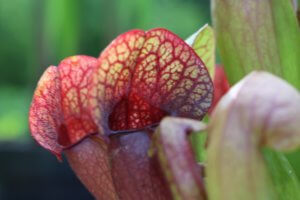
Sarracenia purpurea – Purple pitcher plant – my only carnivorous plant to date
I love carnivorous plants. I find the fact that they have adapted over thousands of years to catch and digest insects fascinating – the result of their natural habitats in nutrient poor bogs or other nutrient deficient environments.
Of course children love the drama of the venus fly trap but gruesome as it is, peering into the belly of the Purple Pitcher plant in high summer to see many dying flies and even wasps is also rather enthralling.
This week I finally lost patience with the many fungus gnats that are flying around my kitchen. You’ll know you have fungus gnats as they tend to zoom around and occasionally dive bomb into your tea. When I water any houseplant on the soil surface, several fly out. I was very accepting of these as in the numbers I have them they are an irritant but won’t do any damage to the plants. My husband is less patient about it and this week I had to act.
Very effective have been those bright yellow plastic tacky pads and many have come to a sticky end on these. But they are hardly attractive. I tweeted a follower of mine who runs a carnivorous plant nursery in North Yorkshire called Wacks Wicked Plants to see if they have any plants to target the pesky gnat.
They and other helpful twitter users recommended Sundews (drosera) and Butterwort (pinguicula). Sundews were already on my list of plants I’d like to buy but I wasn’t familiar with pinguicula. Follow this link to a californian nursery called Cactus Jungle to see the best photo I’ve found. It’s basically the living version of the nasty yellow plastic traps but is green and alive – and just the job.
International Garden Photographer of the Year Competition
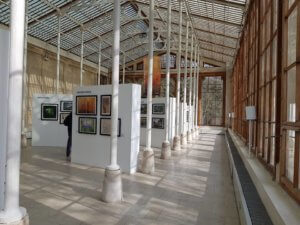
Nash Conservatory in Kew – hosting the 2018 International Garden Photographer of the Year competition
I was amazed by the visual feast that awaited me in the Nash Conservatory at Kew, which was hosting this prestigious competition until 11th March. The various categories focus on garden, plant and botanical photography.
I am trying to develop my photography skills and was hoping to learn something from the entries. All have small cards alongside the prints to give an explanation by the photographer of when and where they captured the shot. They also say which camera was used, which lens and at what aperture and shutter speed the shot was taken.
I didn’t learn as much as I’d hoped and given how popular and competitive such competitions are, I understand why the entrants don’t want to give many of their techniques away.
The overall winner ‘Cerrado Sunrise’ was a worthy winner and a truly stunning shot. Each of the plants looks like they’re made of multiple fibre-optic strands. Such skill is to be admired.
Sweet peas are up
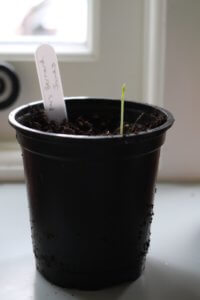
Sweet Pea ‘Mrs Bernard Jones’ making an appearance this week
Last week in my ‘Six on saturday’ I showed my lovely sweet pea seeds, chipped of their outer coating and explained why they are indoors.
I can report that within 7 days of planting, they were already sprouting. This is Sweet Pea ‘Mrs Bernard Jones’ and I’m hoping she’s as charming as she sounds.
I’m keeping them all indoors and whilst they are on a fairly bright windowsill I know they will grow more leggy than if they were in a greenhouse.
I’m going to be very attentive to them – turning them regularly to stop them bending too much towards the light and pinching them out to prevent too much leggy growth.
‘Mrs Bernard Jones’ will join ‘Aunt Jane’ and ‘George Priestly’ for what promises to be a classic summer party.
Six on Saturday is a weekly meme – take a look at the comments at the base of host The Propagator to see
more ‘sixes’ from other keen gardeners.


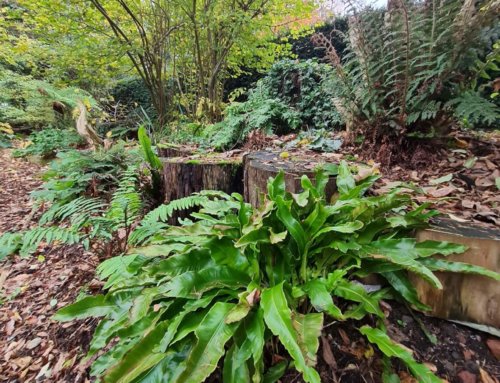
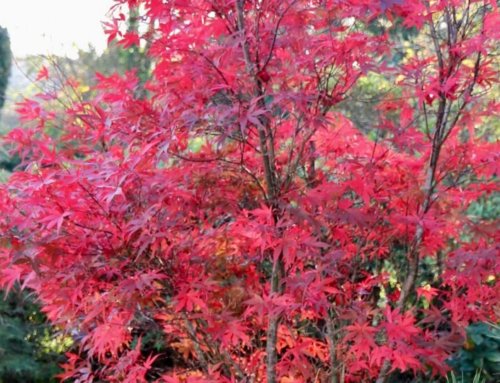
I LOVE the sound of yiur new greenhouse. I know i shall be jealous when it’s finished.
After years of yearning for one, saving for one and planning for one, I can hardly believe it’s happening. So I’m almost jealous of myself!
I‘m looking forward to seeing your greenhouse finished. (The brick basement looks very interesting). About the gnats I also use yellow stickers. My carnivorous plants (Sarracenia and Drosera) finish the job, even if the Drosera is more effective to catch them (be careful not to feed them too much: I lost one that was “suffocated” by too many gnats …)
Great to hear you’re a carnivorous plant grower too. I had no idea that they could catch too many flies!
I hope we hear more of the greenhouse, as you’ve already taught me so much about how to plan for one, should I ever be flush enough to. Enjoyed hearing about your trip to Kew, also. You did well w/the mimosa. I’ve always thought they must have the most glorious scent. Do they?
Yes the mimosa does smell lovely. Unfortunately I was so busy faffing with my camera this week that I didn’t really stop and take it in. That’s the trouble with photography, it can take you away from the bigger picture.
Your greenhouse looks as though it is going to be fabulous! What a wonderful legacy from your dad! I loved your mimosa photo and your selection for women’s suffrage. I think the photography exhibition is coming to Sissinghurst, so I will check that out!
Thanks Ali. My dad would have loved it. He’d also have loved the brickwork. He had several books on the subject and bored us with talk of ‘flemish bond’. I now get why he was so interested!
I am green with greenhouse envy. I think you may be building my dream greenhouse! Good luck with it and I look forward to seeing the finished product.
Thanks Craig. It really is a bit of a surreal thing to be able to build something I’ve always wanted. I’ve never been a big cap-ex gardener so it feels very extravagant. Will definitely keep everyone posted. I won’t be able to help myself!